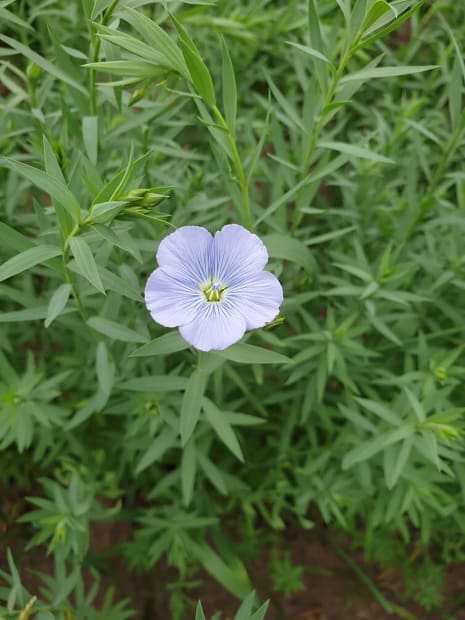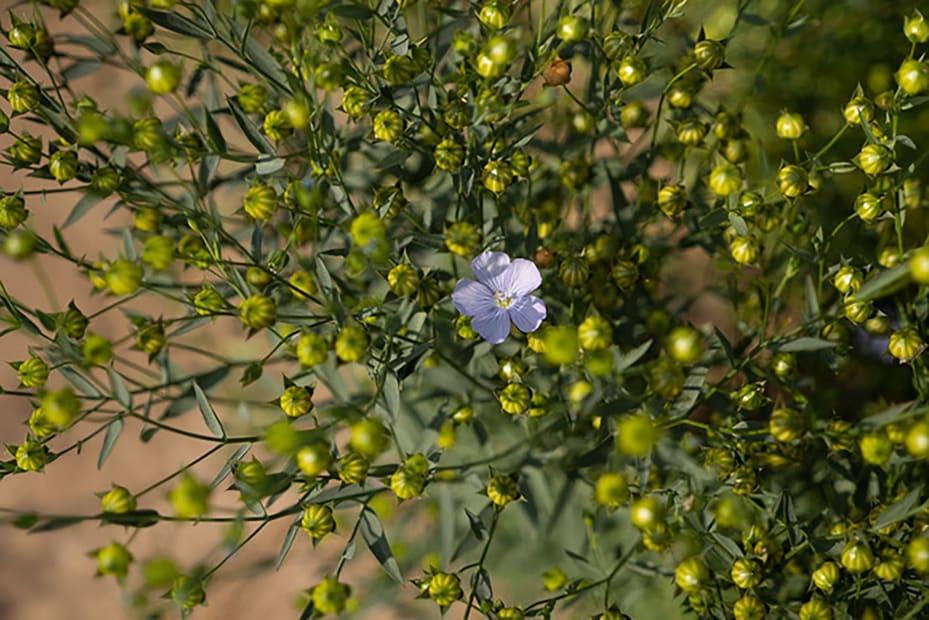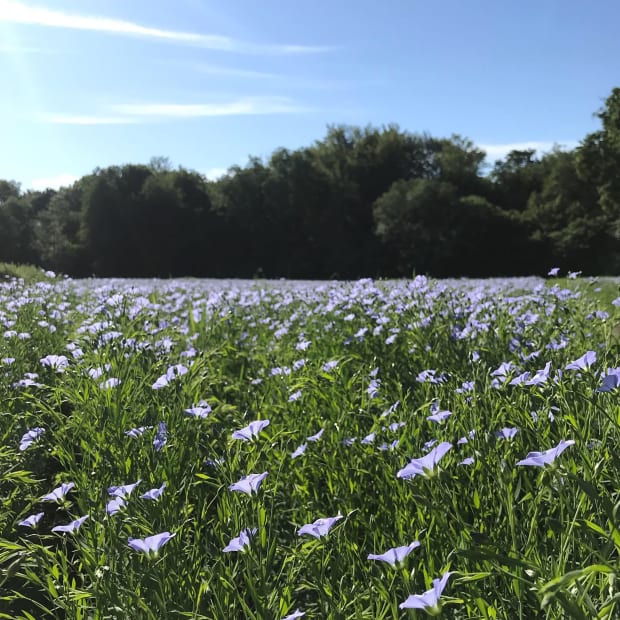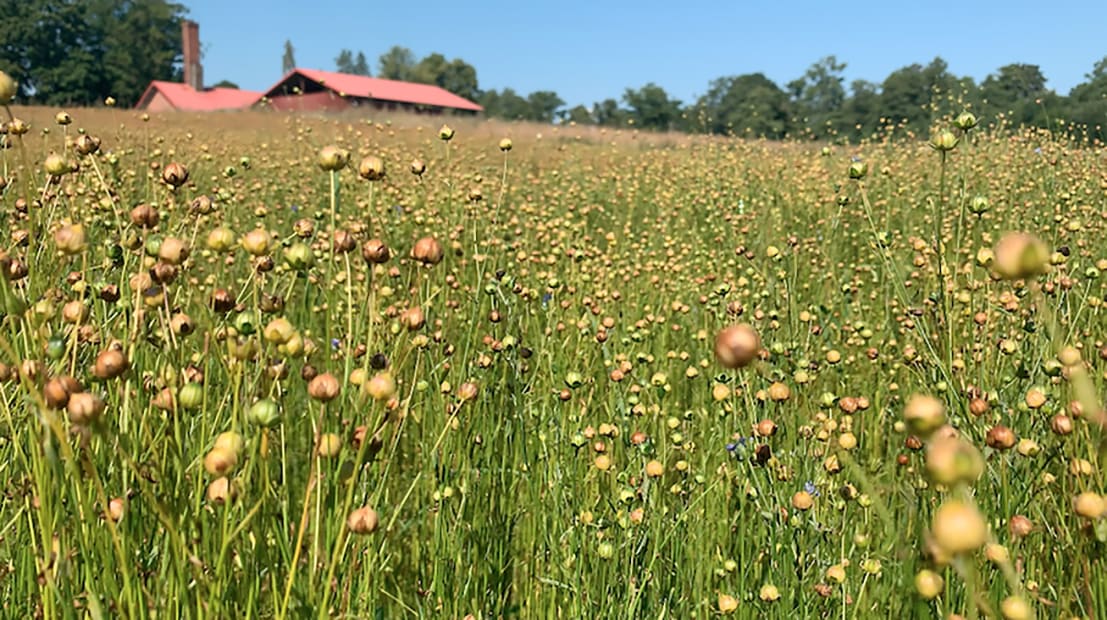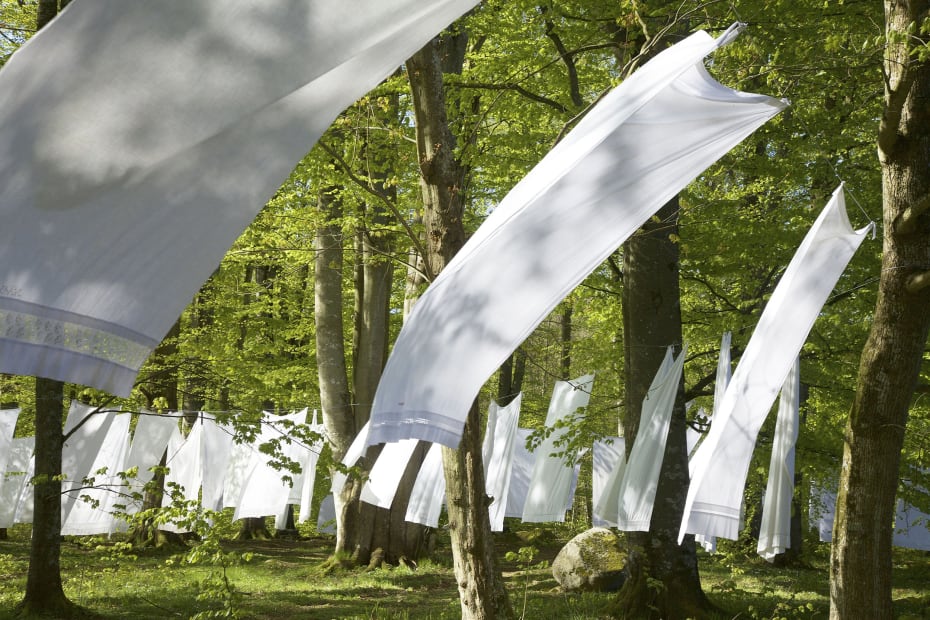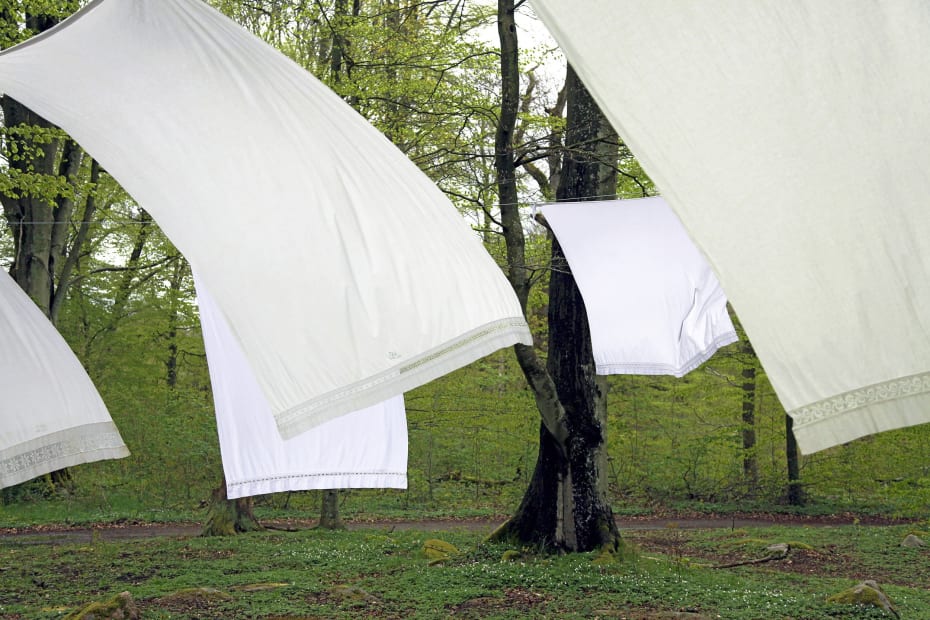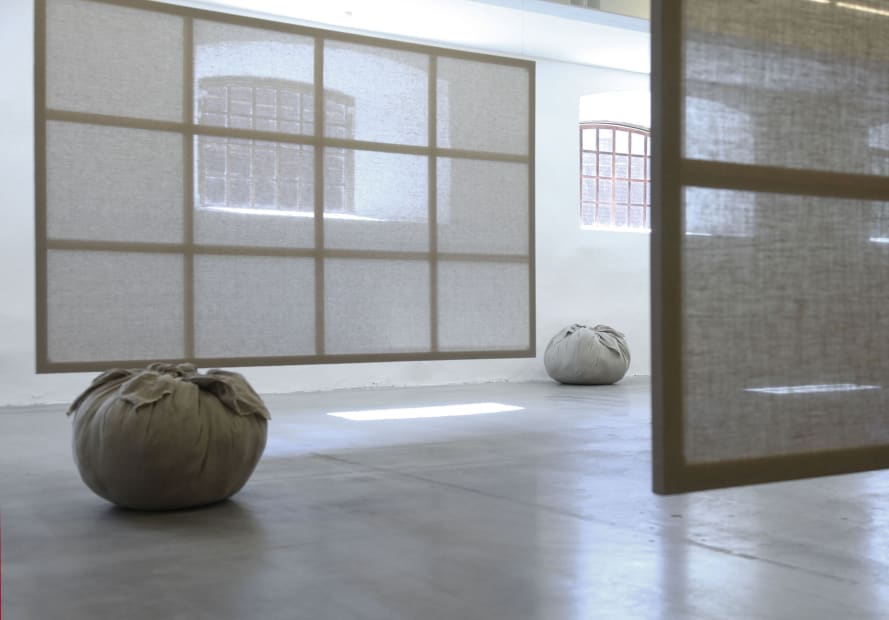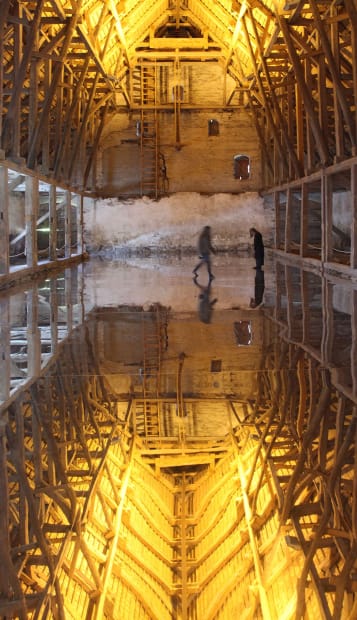Kimsooja: Sowing Into Painting: Wanås Konst Sculpture Park, Sweden
Sowing Into Painting gives space for reflection
Kimsooja uses nature and architecture and transforms them with the help of mirrors and fabric
that call attention to us in our surroundings and give space for reflection. Kimsooja describes
the exhibition at Wanås Konst as creating a circle within her oeuvre connecting her long
standing interests in painting, textiles and agriculture.
Just inside one of the gates to the Sculpture Park, near the buildings at Wanås, flax grows as a
part of Kimsooja’s exhibition. Through her interest in cultivating at Wanås, she takes
advantage of something unique to the site that most art museums cannot offer—the possibility
of farming the land. Kimsooja, who has been active as an artist since the early 1980s, began
her artistic path as a painter with a particular interest in redefining the structure of the surface
of the canvas. The canvases were eventually replaced by fabric, and Kimsooja began to
rework the concept of surface and examine the three-dimensional in the woven fabric
structure and through sewing. In the early 90s she transitioned to using pieces of fabric as they
were while sewing and weaving became a way of examining the world, similarities and
differences between cultures, and traditional women’s work. In works entitled A Needle
Woman, the notion of the needle became a metaphor for seeing the body as a needle that
weaves together the fabric of life, places and cultures.
The flax field, sown at the end of April, will grow and change over the course of the
exhibition from green sprouts to stalks with sky-blue flowers and seeds. Growing flax pulls us
back within art history to the flax fibers that were used to manufacture textiles including
canvas and linseed oil that is the classic binding agent in artists’ oil paints. The planting
project at Wanås Konst brings together Kimsooja’s interests in painting and textiles that have
characterized her entire oeuvre.
These plants, which are grown and cultivated in a period of several months, will be
transformed into paintings that could last for centuries. As well as a physical source of
materials for painting, the field becomes a fluid tableau, covering the ground, in a pattern
akin to a weaving in the earth. (Kimsooja)
In the presentation by Kimsooja, the field becomes an artwork, her interest goes beyond the
object, and she creates awareness of what is already there. Her interest in nature is rather
about a wider understanding about the cosmos. She uses the surroundings, sharpening our
senses, emphasizing the stillness of the site, the spiritual element—she wants us to see, hear,
and feel more.
Kimsooja’s oeuvre is associated with traditional South Korean bedcovers, which she has used
in several installations since 90’s. In the sculpture park, she has instead chosen to work with
old-fashioned white sheets that in Sweden are traditionally embroidered with a monogram or
decorated with lace—a frame of life that are a part of creating a home and that display care
and reflection. Harald Szeeman has described the sheets in Kimsooja’s oeuvre as a theater for
birth and death, our ephemeral condition. Extending her Laundry Woman series, they are like
a hanging field of paintings, in the beech wood forest, while they simultaneously provide
connections to the mundane. In the Art Gallery, Kimsooja again works with textiles as a new
series of large scale conceptual painting, through raw canvases of linen, both stretched and
folded like bottari, the Korean cloth bundles used to wrap belongings and that have become a
characteristic element of her oeuvre with references to migration, displacement, and urgency,
as well as a formalistic form that is a three dimensional painting, a sculpture, and an object.
Also in the Art Gallery are three of the six non-narrative chapters of Kimsooja’s first 16mm
film series Thread Routes. Started in 2010 and shot on five different continents, the films use
textiles as a point of investigation into human life, culture, and the natural world. For the
artist, the approach is a ‘visual poem’ showing differences and similarities connecting people
and cultures across the world.
In the old Hay Barn from 1750, Kimsooja has installed a mirror floor that reflects the
surroundings and structure of the ceiling construction, which rises like a cathedral with its
highest point 15 yards up. Through the mirror floor, she gives space for the observer to enter,
and become a part of the artwork. On the other side of the building, which is more than 54
yards long, she has worked with stuffing fabrics in cracks and holes in the stone wall, tracing
back to her Deductive Object made in conjunction with her residence at MoMA PS1 1993. In
the large space, artworks coexist that make us look far away and up close. Her works both
occupy the room and leave it empty—the entire space becomes an experience, with this
experience being her artwork.
Courtesy of Wanås Konst and Kimsooja Studio
Photos by Mattias Givell & Martin Lang & Elin Magnusson

